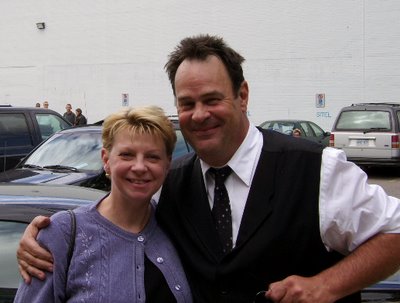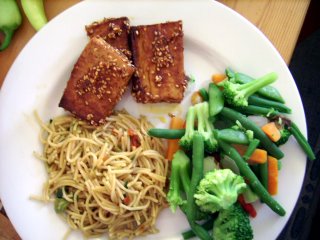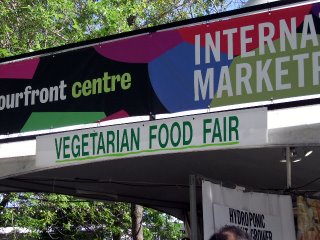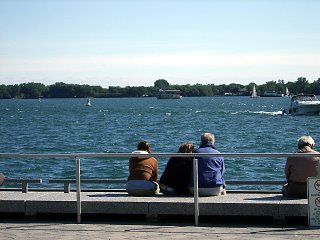So earlier in the day, I made the cookies. Again, an easy recipe to follow and it didn't make a gazillion dozen. I think I got 12 or 14 cookies out of the batch.

Jade was over that weekend, so she particpated as well. It's always fun to have more people involved in these kinds of things. I've never tried pairing wine with cookies, so I had no idea which wines to choose. I took a gamble on 3 different ones. When I do this sort of tasting, I like to get 3 rather different wines.
Wine can be made from a variety of fruits and even grains (think Sake from Japan), but when talking about wine, unless otherwise specified, we're talking about wine made from grapes. Vitis vinifera are the main types of grapes used to make wine. These include the names most of us are familiar with, such as Cabernet Sauvignon, Chardonnay, Merlot and so on. These have been grown for thousands of years for the sole purpose of making wine. To eat them, they're not particularly good. In some countries where the growing seasons aren't as long, or that have rather harsh winters, hybrids have been developed. These are not as popular as vitis vinifera, but some are pretty darn tasty!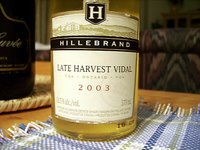
First we have Hillebrand's Late Harvest Vidal. Vidal is a white grape variety and it is a hybrid. Now here's something really interesting. Vidal is sometimes called Vidal Blanc. It's a cross between Rayon d'Or and Ungi Blanc grape varities. It was developed in the 1930's by Jean Louis Vidal who was doing this cross breeding with cognac in mind. (Yes, cognac is made from wine). Ungi Blanc is called Trebbiano in Italy and is the most common white grape planted in that country. The wine that is made from the Trebbiano grape is also used to make balsamic vinegar! Different names for the same grape in different countries only adds to the confusion. Once you know that it's all the same thing, it makes it a bit easier.
Late harvest wines are not ice wines, but a very nice affordable alternative. The grapes are left to hang on the vines well past the regular harvest so the sugars get really concentrated. It makes for a lovely, sweet dessert wine.
For the red wine, I wasn't sure if I should go full-bodied, medium or light-bodied. When talking about the body of a wine, we're talking about how intensely flavoured it is, but also how it feels in your mouth. A good analogy is to compare light bodied wine to water and full bodied wine to milk in how they feel in your mouth.
A nice dark chocolate pairs wonderfully sometimes with a cabernet sauvignon (usually full-bodied), but since I was doing cookies and nuts, I chose to go with a Gamay (light-bodied). 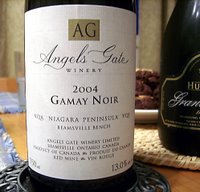 Gamay or Gamay Noir as it is sometimes called (just to add to the confusion) is a wonderfully fruity red wine. It is also very light in colour and tends to be an easy wine to drink. Gamay is the grape used exclusively in Beaujolais wines. If the label says Beaujolais, it's Gamay. It doesn't list the grape variety anywhere on the label, because that's the way it is with Old World wines.
Gamay or Gamay Noir as it is sometimes called (just to add to the confusion) is a wonderfully fruity red wine. It is also very light in colour and tends to be an easy wine to drink. Gamay is the grape used exclusively in Beaujolais wines. If the label says Beaujolais, it's Gamay. It doesn't list the grape variety anywhere on the label, because that's the way it is with Old World wines.
Countries that have been producing wine for eons are called 'Old World'. Think France, Italy, Germany, Spain. 'New World' refers to Austrailia, Canada, United States, etc. Old world wines are usually named for the region they come from. These countries have very strict rules and laws governing the production of wine, so when you know what sorts of grapes are grown in certain regions, then you will know what grapes are used to make the wine. So, to start easy, Beaujolais grows Gamay and the wine must be 100% Gamay grapes. In the New World, we tend to put the grape variety on the label. See the label on the bottle I chose? This one has a lot of info, if you can see it, (Clicking the picture might enlarge it). Wine labels are another confusing subject, but in big letters "Gamay Noir", so that's what's inside.
For my third bottle, I chose a sparkling wine. This is similar to a champagne, but cannot be called champagne unless it comes from the Champagne region of France. (more wine rules) Everywhere else that makes wine with bubbles in it, has to call it sparkling or something else to that effect. I love champagnes, but they tend to be quite expensive. They are very labour intensive and in France for the most part, they use tried and true methods, which is why they tend to be pricey. Sparkling wines are an inexpensive alternative. Champagnes and sparkling wines also tend to be very food friendly and go well with dishes that may not be particularly suited for wine. So for that reason, and the fact that I had no idea what to have with cookies, I picked a bubbly.
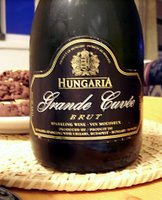 Sparkling wines can be found from almost every country and this one is from Hungary. Seems a little odd, I thought, but The Frugal Oenophile had profiled it as a wine of the week, so I figured I give it a whirl. The price was right and it was labelled as a little off-dry, so it had a tinge of sweetness, so that should work for cookies. So I hoped.
Sparkling wines can be found from almost every country and this one is from Hungary. Seems a little odd, I thought, but The Frugal Oenophile had profiled it as a wine of the week, so I figured I give it a whirl. The price was right and it was labelled as a little off-dry, so it had a tinge of sweetness, so that should work for cookies. So I hoped.

All of our glasses were set up, wine was poured, we got a cookie and started. Sip of wine, bite of cookie, sip of wine. Hmmm....the sparkling wine wasn't so good with the cookie. Let's try the Gamay Noir. Sip of wine, bite of cookie, sip of wine. Dang! Wasn't right either. Move on to the Late Harvest Vidal. Sip of wine, bite of cookie, sip of wine. That wasn't it either. But the wine was very yummy. Another sip. Mmmm!
When pairing wine and food, you can go two ways. Choose wines to complement or to contrast the food you're serving. Most times I start with food and pick a wine to go with it, but if I have a wonderful wine, I will pick a dish to complement my special bottle. You don't want a wine that is too overpowering for the flavours of the food, but you also don't want the food to overpower the wine. If you can get a combination that picks up the nuances in both the food and the wine, then you've got an experience that is heavenly. Cheese and wine go so well together because they each have complex flavours that mingle and explode in your mouth. We can also talk about acids and fats and tannins and all sorts of other things, but that again, adds to the confusion. Today, we want to keep it simple because today it's cookies! Or so I thought it was simple.
So, the conculsion of this experiment/challange is that none of these wines 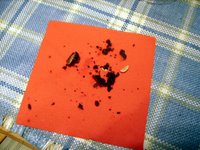 go with Double Chocolate Almond Explosion cookies. Perhaps a more full-bodied red would work? Or maybe in the end, no wine will go with these cookies. There is only one way to find out. Make more cookies and drink more wine! This time though, all that was left......
go with Double Chocolate Almond Explosion cookies. Perhaps a more full-bodied red would work? Or maybe in the end, no wine will go with these cookies. There is only one way to find out. Make more cookies and drink more wine! This time though, all that was left......
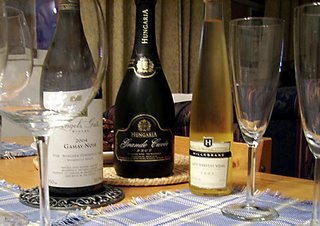
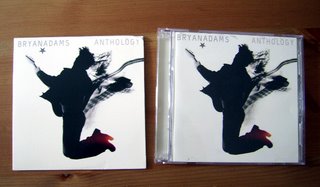

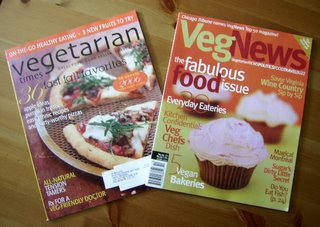
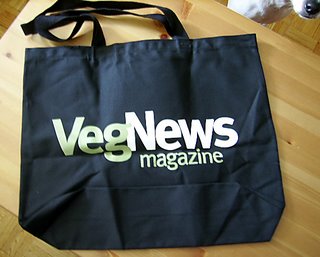

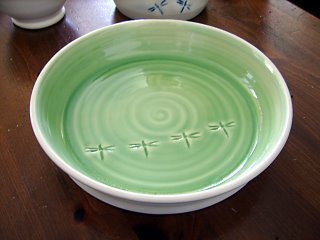
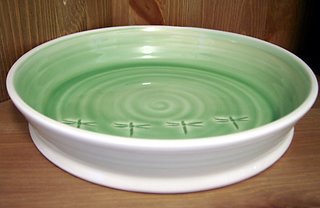
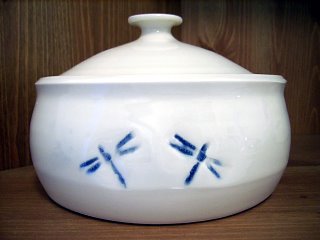



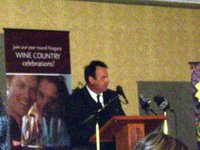



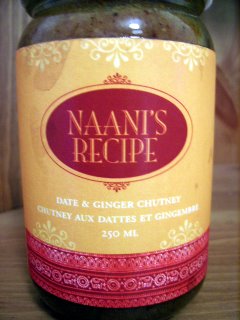

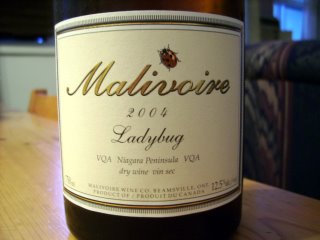 The meal was paired with a lovely rose from
The meal was paired with a lovely rose from 
